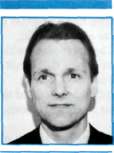 |
Home | Search | Browse | About IPO | Staff | Links |
 |
Home | Search | Browse | About IPO | Staff | Links |
|
The Pulse Explaining teacher pay variatioins 
By RICHARD DAY
The Illinois Education Association commissioned Richard Day Research to examine state data on 79,000 public school teachers working in 996 school districts across Illinois, excluding Chicago. The initial goal was to attempt to explain the variation in teacher pay. On the way to this a number of very interesting findings emerged. One of the most surprising is the tremendous variation that exists between these 996 school districts. While this column is not intended to be a short course in statistics, a brief refresher would be helpful. In a normal distribution of cases, the mean (arithmetic average) and the median (the middle score) are nearly equal. In this study, however, the mean and the median diverged widely for many of the variables. Four of these — equalized assessed valuation, total expenditures, number of teachers and total state revenue — are in table 1. Notice how widely different the mean and the median are between districts. Notice, too, the extreme variation between the minimum or lowest value and the maximum or highest value for each of these variables. For example, there is one district in Illinois with an equalized assessed valuation (EAV) of $1.3 million and another with an EAV of $2.7 billion. There is at least one school district with total expenditures of $77,000 and another with $72.8 million. It should come as no surprise that it would be nearly impossible to make such a widely disparate situation uniform.
There are other measures, such as tax rates, average class size and average teacher salary, that policymakers apparently watch closely and attempt to keep relatively uniform (see table 2). Notice that for these three, the mean and median are nearly identical. Yet there is still considerable variation between districts. The total tax rate ranges from .6 to 5.5 cents per $100 assessed valuation. The average class size per school district ranges from four to 24 pupils. And average pay ranges from $11,400 in one district to $40,000 in another. The principle task of this study was to examine the pay variation. An initial analysis of the data showed a very strong effect on salary by region and by type of district (elementary, high school or combined into one unit). (See table 3.) The suburbs consistently pay higher salaries and central Illinois consistently pays the lowest. High school districts pay the highest salaries and elementary districts pay the lowest. Using salary as a criterion, the best place to be teaching is in a high school in the Chicago suburban area ($34,058), and the worst place to be is in an elementary school in the central downstate region ($18,857). What accounts for the variation in teacher pay? In an attempt to answer that question, 65 variables were correlated with average pay. Some of these variables concerned tax rates, state and federal aid, spending and property valuation. Others dealt with class size, percentage of minority students, region, type of district, etc. Finally we examined matters related to teachers in each district: average age, percentage of faculty who are female and percentage of the faculty with at least a master's degree. 38/March 1987/Illinois Issues
In the first equation six variables of the 65 accounted for 82 percent of the variation in average salary. One variable, the percentage of teachers in the district with at least a master's degree, accounted for 58 percent of this variation. In the second equation, with the percentile of faculty with at least a master's degree removed from the analysis, 76 percent of the overall variation is explained. In this second equation the role of equalized assessed valuation is substantially increased, accounting for 41 percent of the overall variation. In the fifth equation all components of salary are removed (percentage of faculty with at least a master's, years of experience and age). In this equation 67 percent of the variation is explained, and the two strongest predictors of salary are whether or not the district is in the suburban region (31 percent) and the percentage of females on the faculty (24 percent). The percentage of females on faculty has a strong negative correlation with average salary. In this preliminary analysis we presume this is explained by the high percentage of females who teach elementary compared to the higher percentage of males who teach high school. A casual look at this data may lead one to presume that all teachers need to do is to get a master's degree and they will be able to increase their pay. There are built-in incentives or disincentives, however, to consider. Further analysis will likely show some districts with incentives, such as paying the costs of additional education and THEN paying significant increases once a master's degree is attained. Other districts may not have the ability to pay for such incentives. An analysis of districts' willingness to offer such incentives and their ability to pay for them is likely to show extreme variations. Richard Day heads his own survey research firm, Richard Day Research of Evanston. He holds a Ph.D. from the University of Illinois in Urbana-Champaign.
39/March 1987/Illinois Issues
| ||||||||||||||||||||||||||||||||||||||||||||||||||||||||||||||||||||||||||||||||||||||||||||||||||||||||||||||||||||||||||||||||||||||||||